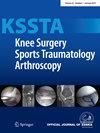Revisiting terminology: The transition from ‘functional alignment’ to ‘functional knee positioning’
IF 5
2区 医学
Q1 ORTHOPEDICS
引用次数: 0




回顾术语:从“功能性对齐”到“功能性膝盖定位”的转变。
功能对准(FA),现在被提议称为功能性膝关节定位(FKPos),是全膝关节置换术(TKA)的一种现代的、患者特异性的方法,强调三维(3D)方法。这种方法结合了三维骨骼解剖、内外侧伸展和屈曲的松弛度、前腔室的几何形状和松弛度,以实现个性化的植入物定位,并随着先进手术辅助设备(如机器人技术)的发展而不断发展。术语“功能对齐”不足以捕捉该技术的3D特性,该技术利用机器人系统动态优化髌骨-股骨(PF)和胫骨-股骨(TF)软组织平衡,同时保留天然韧带结构,通常被称为膝关节的“DNA”。FKPos强调PF和TF关节的生物力学解耦,确保适当的PF和TF运动学,并解决独特的解剖和对齐变化。与传统对齐方法相比,FKPos的临床结果显示功能恢复改善,患者满意度提高,并发症减少。采用FKPos一词更准确地代表了这种创新的TKA手术方法的整体性和个性化。
本文章由计算机程序翻译,如有差异,请以英文原文为准。
求助全文
约1分钟内获得全文
求助全文
来源期刊
CiteScore
8.10
自引率
18.40%
发文量
418
审稿时长
2 months
期刊介绍:
Few other areas of orthopedic surgery and traumatology have undergone such a dramatic evolution in the last 10 years as knee surgery, arthroscopy and sports traumatology. Ranked among the top 33% of journals in both Orthopedics and Sports Sciences, the goal of this European journal is to publish papers about innovative knee surgery, sports trauma surgery and arthroscopy. Each issue features a series of peer-reviewed articles that deal with diagnosis and management and with basic research. Each issue also contains at least one review article about an important clinical problem. Case presentations or short notes about technical innovations are also accepted for publication.
The articles cover all aspects of knee surgery and all types of sports trauma; in addition, epidemiology, diagnosis, treatment and prevention, and all types of arthroscopy (not only the knee but also the shoulder, elbow, wrist, hip, ankle, etc.) are addressed. Articles on new diagnostic techniques such as MRI and ultrasound and high-quality articles about the biomechanics of joints, muscles and tendons are included. Although this is largely a clinical journal, it is also open to basic research with clinical relevance.
Because the journal is supported by a distinguished European Editorial Board, assisted by an international Advisory Board, you can be assured that the journal maintains the highest standards.
Official Clinical Journal of the European Society of Sports Traumatology, Knee Surgery and Arthroscopy (ESSKA).

 求助内容:
求助内容: 应助结果提醒方式:
应助结果提醒方式:


